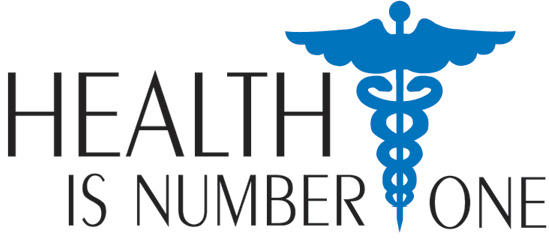Health Library ~ Family Medicine in Mullica Hill, NJAll Material copyright Craig M. Wax, DO unless otherwise denoted. ALCOHOL AND DRUGS Alcohol and Drug Abuse On the Rise Among Young Women Copyright American Osteopathic Association Despite increased awareness about the dangers of substance abuse, more than four million women in the United States are addicted to alcohol and other drugs. And according to recent studies, alcohol and other drug abuse among young women is on the rise. Use of Drugs and Alcohol Starts Early Studies show the first use of alcohol is typically at the age of 13. Typically, the first use of other drugs is at the age of 14. Individuals who use alcohol or other drugs at a young age are often setting themselves up for future long-term addiction. The use of alcohol, for example, has become commonplace among young women, with 45 percent of females aged 12 or older reporting alcohol use in the past month. In addition, the incidence of binge drinking is ranked highest among women 18-25 years old. In addition to direct health risks, increased drug use is consuming the time and money of young women. Alcohol, of course, is not the only problem. Studies estimate that 50 percent of high school seniors have tried marijuana and that just over 21 percent of the people who have entered drug and alcohol treatment programs are under the age of 24. The rise of substance abuse among young women isn't likely to decrease anytime soon. Recent studies show that alcohol and other forms of drug use are on the rise throughout the nation, especially among young people who live in rural areas. According to Richard Smayda, D.O., an osteopathic family physician, who practices in Massachusetts, "The rise in drug abuse by young women means that it is time for America to view drug use as a symptom of a greater set of problems." Early Exposure Increases Risk of Use According to the National Association for Children of Alcoholics, young women raised in households where alcohol abuse is the "norm" are more likely to be truant, drop out of school, repeat grades, or be referred to school counselors or psychologists. In addition, they may have difficulty bonding with teachers and fellow students. Exposure to drugs prior to birth can be hurtful too. "Recent research has discovered a genetic basis for addictive behaviors," says Dr. Smayda. "Studies are showing that the biochemical make-up of children is decided in the womb and the substances that children are exposed to after conception can have impacts that last a lifetime." Dr. Smayda notes that other factors can also lead to substance abuse and addiction, such as: * Lack of a support system * Increased availability of drugs * Biochemical imbalance, or pre-disposition to substance abuse * Mental illness * Peer pressure Profile of a Substance Abuser * Low self-esteem * Feeling a loss of control over life * Exposure to substance abuse * Sexual and other kinds of physical victimization in childhood as well as in adulthood
Getting Help * 12-step programs * Mental health agencies * Community-based programs * Church groups * Clinics and hospitals * In-patient programs Dr. Bell uses the osteopathic medical philosophy to treat patients fighting substance abuse. "I stress to my patients that the body is a unit," explains Dr. Bell. "It is vital that patients realize that what you do to one part of the body affects all aspects of the person." Dr. Bell suggests that young women dealing with substance abuse should: * Identify what situations or individuals may lead them to a relapse. * Have support systems such as family and friends. * Work on increasing self-esteem and feelings of self-worth. * Understand stress factors and learn how to cope with them in productive ways. * Seek help before relapses occur. As physicians who emphasize prevention and wellness, D.O.s strongly support the U.S. Surgeon General's Healthy People 2010 initiative in the quest to improve quality of life and increase the number of years of a healthy life. The American Osteopathic Association (AOA) reminds you that November 12-18 is National Osteopathic Medicine Week. This year's target group is young women from the ages of 12 to 24. During this time, osteopathic physicians (D.O.s) will work to raise awareness among young women regarding the many issues they face as they strive to maintain healthy lifestyles. In addition, D.O.s plan to educate them on how preventive care can help maintain good health throughout their lives. D.O.s are fully licensed physicians who have additional training that focuses on the body's structure and function as well as its ability to heal itself. For more information on osteopathic medicine or to locate a D.O. in your area, call the AOA at 1.800.621.1773, ext. 8252 or visit the AOA's Web site at www.aoa-net.org. * High school students drink 35 percent of all wine coolers sold in the U.S. * 39 percent of all motor vehicle deaths result from alcohol use. * 12th-graders living in rural areas are more likely than youths in urban areas to use cocaine, crack, amphetamines, inhalants, alcohol, cigarettes, and smokeless tobacco. * 70 percent of AIDS cases among young women are drug-related. Sources: American Osteopathic Association, National Association for Children of Alcoholics, National Clearing House for Alcohol and Drug Information, U.S. Department of Health and Human Services, and National Council on Alcoholism and Drug Dependence, Inc. You can contact these organizations for additional information: National Association for Children of Alcoholics
National Clearing House for Alcohol and Drug Information
National Council on Alcoholism and Drug Dependence, Inc.
U. S. Department of Health and Human Services Girl Power! |
|





